#expo firebase authenticate
Explore tagged Tumblr posts
Text
Ship Mobile Fast
Ship your AI apps in days, not weeks.
Save weeks of development time with our React Native Expo Boilerplate. In App Purchases, Open AI, Anthropic, Replicate, Fal AI, GlueStack, AI Proxy Backend, Firebase, Supabase, Admob, and more.
Ship Mobile Fast AI Wrapper is Live!🔥
For those who want to build AI applications…
Now, you can create the apps you envision in just 1-2 days.😎
Integrations with OpenAI, Anthropic, Replicate, and Fal AI. Protect your API keys from being stolen with AI Proxy Backend.
*
Pro (Best for Casual Apps):
In App Purchases (RevenueCat) Google Mobile Ads Authentication Flow Onboarding Flow Push Notifications Multi Language Support Error Tracking App/User Analytics Lifetime Updates Private Discord Channel Access Supabase⚡️ GlueStack Version StyleSheet Version
*
AI Wrapper (Best for AI Projects):
In App Purchases (RevenueCat) Google Mobile Ads Authentication Flow Onboarding Flow Push Notifications Multi Language Support Error Tracking App/User Analytics Lifetime Updates Private Discord Channel Access Firebase🔥 AI Proxy Backend (API Keys Secured🔒) Open AI & Anthropic Replicate AI & Fal AI Ready-to-Use AI Templates
*
Ship Mobile Fast: https://shipmobilefast.com/?aff=1nLNm
Telegram: ahmetmertugrul
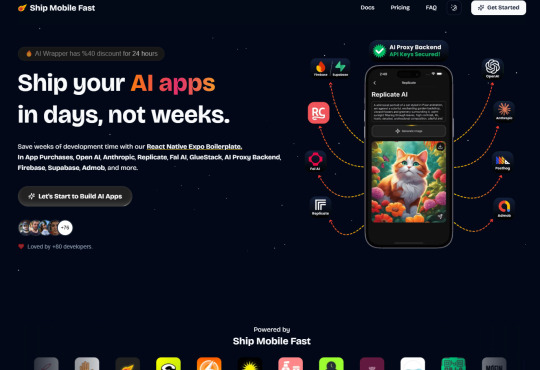

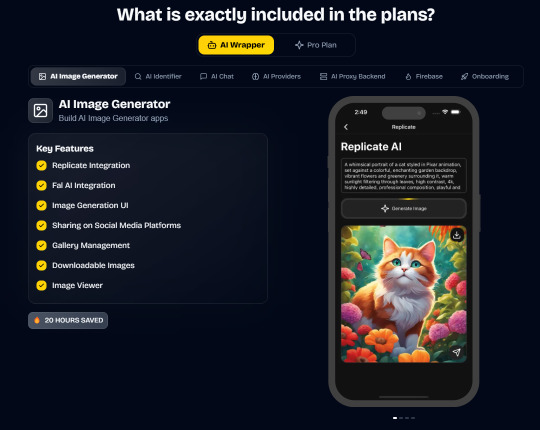
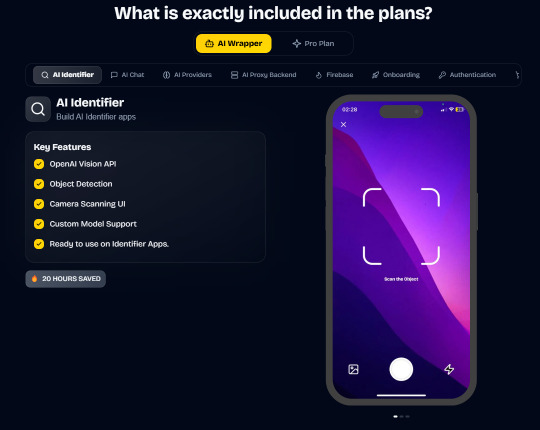
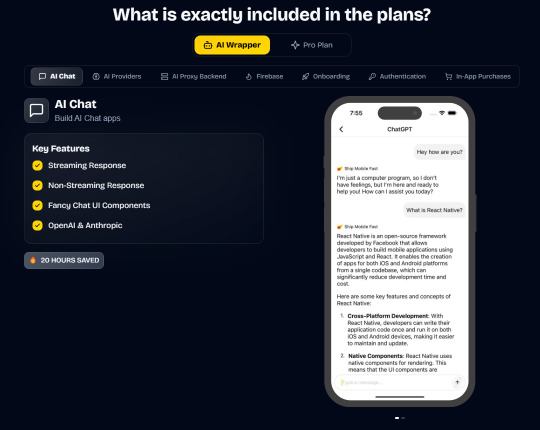
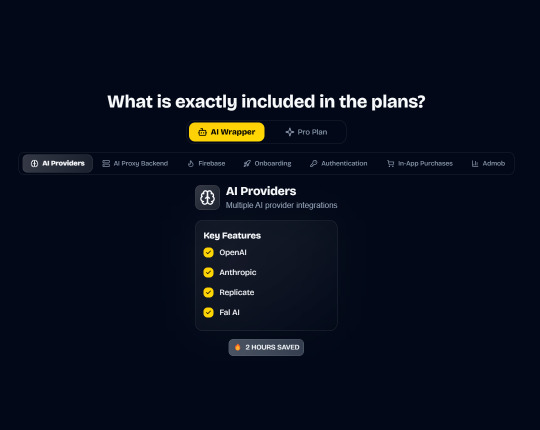
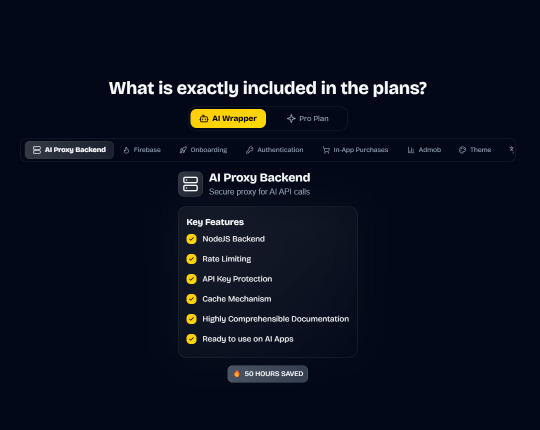
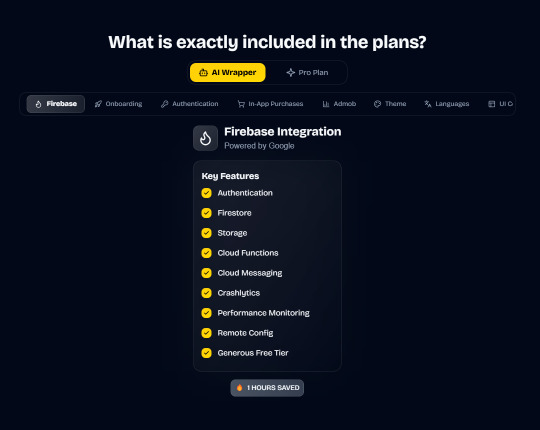
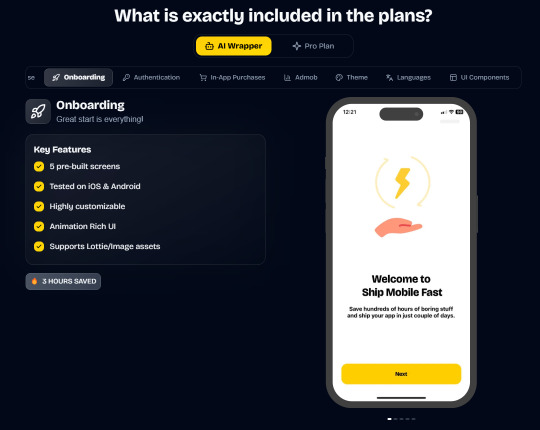


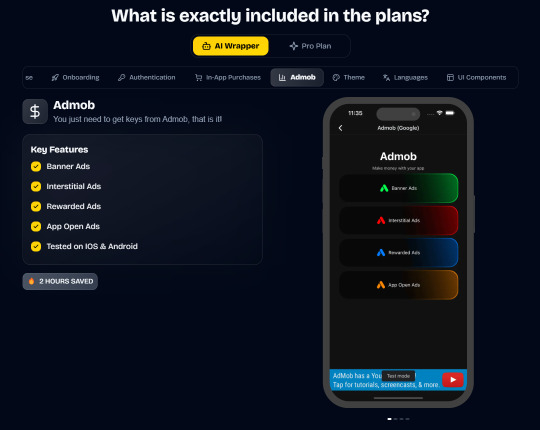
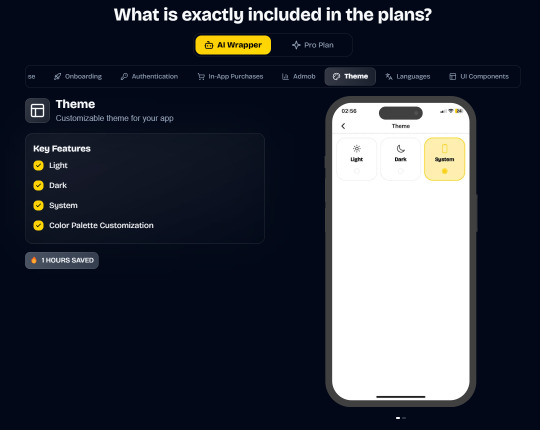
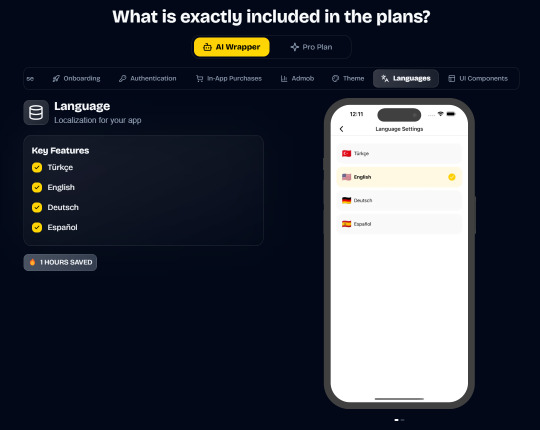
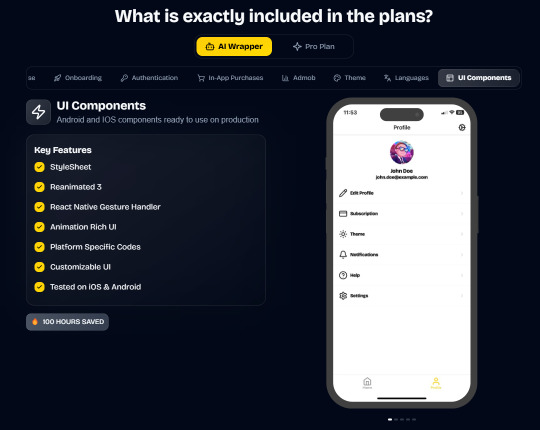
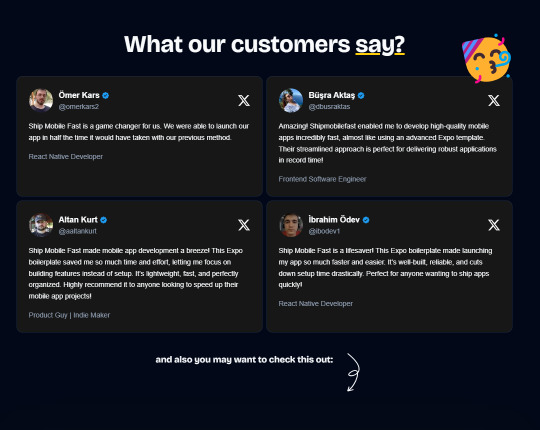
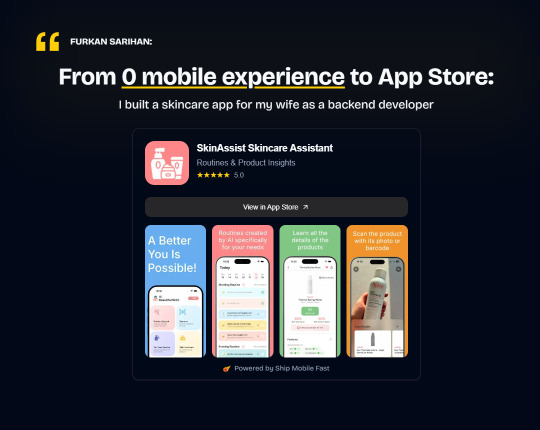

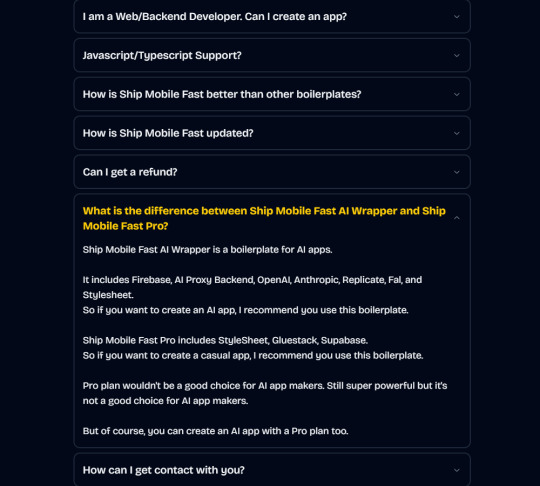
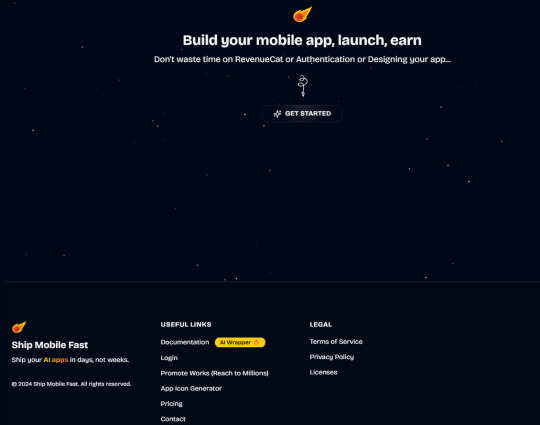
#ai#app#ship#mobile#fast#openai#claude#deepseek#proxy#api#admob#ads#firebase#supabase#falai#backend#ui#ux#replicate#revenuecat#google#expo#boilerplate#template#wrapper
2 notes
·
View notes
Text
Build a Secure Authentication System in React Native with Firebase
1. Introduction Explanation: Highlight the importance of authentication in mobile apps, focusing on security and user experience. * Learning Outcomes*: Readers will learn to implement authentication using React Native and Firebase, including various methods and security best practices. Prerequisites: Knowledge of React Native, JavaScript, and Firebase basics. Tools Needed: React Native, Expo…
0 notes
Text
react native expo firebase authenticate ile login ve register örneği
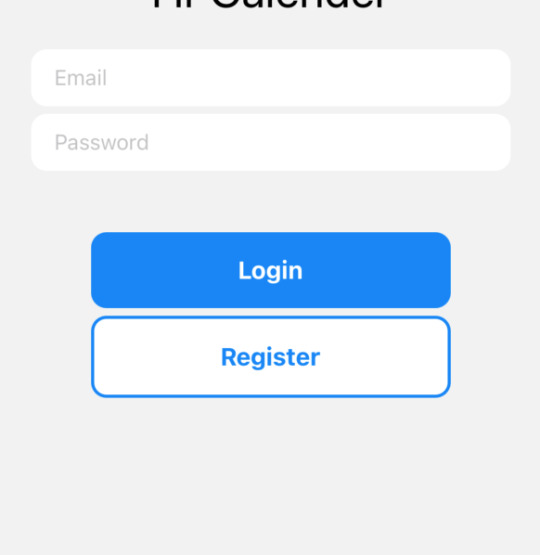
firebase authenticate kullanarak login ve register işlemi yapacağız. Firebase panelinden authanticate kısmını seçip gerekli import linklerini oradan aldıktan sonra
expo so react native tarafı şöyle
app.js sayfasına home ve login sayfalarını ekleyin
--------
<NavigationContainer> <Stack.Navigator> <Stack.Screen options={{ headerShown: false }} name="Login" component={LoginScreen} /> <Stack.Screen name="Home" component={HomeScreen} /> </Stack.Navigator> </NavigationContainer>
login.js sayfası
-----
import React, { useEffect, useState } from 'react' import { KeyboardAvoidingView, StyleSheet, Text, TextInput, TouchableOpacity, View } from 'react-native' import { getAuth, createUserWithEmailAndPassword,signInWithEmailAndPassword } from "firebase/auth"; const auth = getAuth();
const LoginScreen = ({ navigation }) => { const [email, setEmail] = useState('') const [password, setPassword] = useState('')
useEffect(() => { const unsubscribe = auth.onAuthStateChanged(user => { if (user) { navigation.navigate("Calender") } })
return unsubscribe }, [])
const handleSignUp = () => { createUserWithEmailAndPassword(auth,email, password) .then(userCredentials => { const user = userCredentials.user; console.log('Registered with:', user.email); }) .catch(error => alert(error.message)) }
const handleLogin = () => { signInWithEmailAndPassword(auth,email, password) .then(userCredentials => { const user = userCredentials.user; console.log('Logged in with:', user.email); }) .catch(error => alert(error.message)) }
return ( <KeyboardAvoidingView style={styles.container} // behavior="padding" >
<View style={styles.inputContainer}>
<Text style={styles.logo}>Hr Calender</Text>
<TextInput placeholder="Email" value={email} onChangeText={text => setEmail(text)} style={styles.input} /> <TextInput placeholder="Password" value={password} onChangeText={text => setPassword(text)} style={styles.input} secureTextEntry /> </View>
<View style={styles.buttonContainer}> <TouchableOpacity onPress={handleLogin} style={styles.button} > <Text style={styles.buttonText}>Login</Text> </TouchableOpacity> <TouchableOpacity onPress={handleSignUp} style={[styles.button, styles.buttonOutline]} > <Text style={styles.buttonOutlineText}>Register</Text> </TouchableOpacity> </View> </KeyboardAvoidingView> ) }
export default LoginScreen
const styles = StyleSheet.create({ container: { flex: 1, justifyContent: 'center', alignItems: 'center', }, inputContainer: { width: '80%' }, input: { backgroundColor: 'white', paddingHorizontal: 15, paddingVertical: 10, borderRadius: 10, marginTop: 5, }, buttonContainer: { width: '60%', justifyContent: 'center', alignItems: 'center', marginTop: 40, }, button: { backgroundColor: '#0782F9', width: '100%', padding: 15, borderRadius: 10, alignItems: 'center', }, buttonOutline: { backgroundColor: 'white', marginTop: 5, borderColor: '#0782F9', borderWidth: 2, }, buttonText: { color: 'white', fontWeight: '700', fontSize: 16, }, buttonOutlineText: { color: '#0782F9', fontWeight: '700', fontSize: 16, }, logo: { fontSize: 30, color: 'black', paddingBottom: 15, textAlign: 'center' },
})
home.js sayfası
-------------
import { useNavigation } from '@react-navigation/core' import React from 'react' import { StyleSheet, Text, TouchableOpacity, View } from 'react-native' import { getAuth, signOut } from "firebase/auth"; const auth = getAuth(); console.log("auth",auth)
const HomeScreen = () => { const navigation = useNavigation()
const handleSignOut = () => { signOut(auth) .then(() => { navigation.navigate("Login") }) .catch(error => alert(error.message)) }
return ( <View style={styles.container}> <Text>Email: {auth.currentUser?.email}</Text> <TouchableOpacity onPress={handleSignOut} style={styles.button} > <Text style={styles.buttonText}>Sign out</Text> </TouchableOpacity> </View> ) }
export default HomeScreen
const styles = StyleSheet.create({ container: { flex: 1, justifyContent: 'center', alignItems: 'center' }, button: { backgroundColor: '#0782F9', width: '60%', padding: 15, borderRadius: 10, alignItems: 'center', marginTop: 40, }, buttonText: { color: 'white', fontWeight: '700', fontSize: 16, }, })
daha fazlasına bu elemanın repodan bakabilirsini https://github.com/mattfrances/FirebaseExpoAuthentication
0 notes
Text
Libraries And Tools You Should Consider For Your Next React Native App Setup
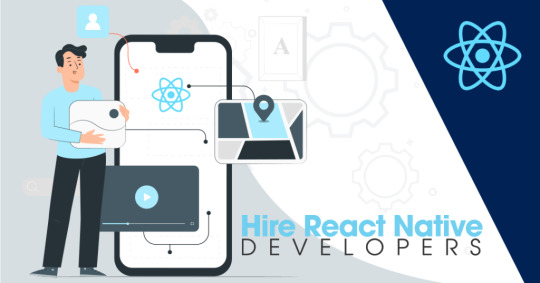
React Native is such a technology that has changed the mobile app development process. It was introduced by Facebook to build cross-platform mobile apps. React Native used a JavaScript library and is built by an awesome open source community, which will help in accelerating the development process.
Today in this article, we will discuss several libraries and tools to use for your next react native app setup and I hope this helps you make the right decision.
1. React-native Base Framework
On the react-native official website, you will get two ways of setting up your react native app: Expo CLI or React native CLI.
Expo CLI
Quick to start writing the first screen.
Quick distribution and installation of the app.
Great for demo or POC apps.
React Native CLI
Easy to add android and iOS native code.
For large-scale applications.
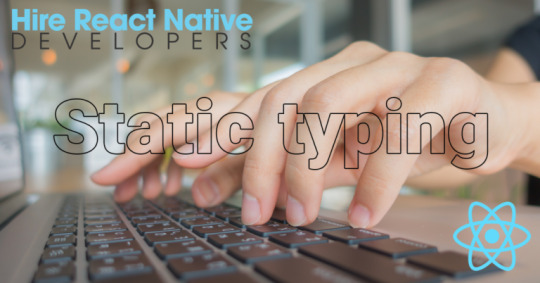
2. Static Typing
If you are a JavaScript developer, you understand the need for strict typing for the code. React Native use type checking that helps with early error detection and increases code readability. Typescript is a strict syntactical superset of JavaScript because it is an open-source programming language.
Typescript
Huge community and widely used in the backend and front end frameworks like NodeJs, Angular 2+, Vue Js, etc.
Faster than flow.
Flow
Flow is not a programming language, it’s just a static type checker for JavaScript.
Premium React support.
3. HTTP Request Client
As most of the applications require to call APIs that is why you need one HTTP client with the help of Axios.
Axios
A well-tested and classic way of doing it.
Graphql Appolo client
It helps in caching the data.
One client for REST APIs and Graphql APIs.
4. Managing Reusable UI Components
React Native provides you reuse of code features. You can simply maintain a codebase and keep a consistent UI, you’ll need to make use of cloud component hubs.
Bit. dev
Continuously publish components from any codebase.
Easily import/install components into any repository.
Document and organize components, all in one place.
Excellent support for React Native.
5. Unit Testing Setup
We all love a quality website or in simple words a website with fewer bugs. For this quality, unit testing is super important.
Jest And Enzyme
It is a very simple testing framework and works with multiple platforms such as Typescript, Node, React, Angular and Vue.
Comes with a mocking framework as well.
Huge community.
6. Navigation
Through React Native you can manage more than a couple of screens then you need to define routing and navigation which is scalable and easy to maintain.
React-navigation
Huge community
Most of the use cases covered name-based routing, passing data from routes, Tab navigation, authentication flows, deep linking, analytics trigger, etc.
You can also use pre-defined navigation react hooks
7. Forms
The native forms in React are not fun writing, I have struggled in most of the scenarios, hence we need a better way of doing forms which is easy to write, maintainable, and importantly developer-friendly. You can consider the following options:
Formik
Huge community.
React hook form
Better performance compared to formik.
It is developer-friendly and easy to use with React-hook-form.
8. Config Loader
You required a nice framework to set up for configs. Try to make your app portable across environments, scalable, enabled for continuous deployment.
You can use react-native-config.
9. Internationalization (i18n)
React Context API
Uses the context APIs from the React.
Simple to use.
React i18 Next
Huge community and widely used.
It has many rich features like plurals, context, etc.
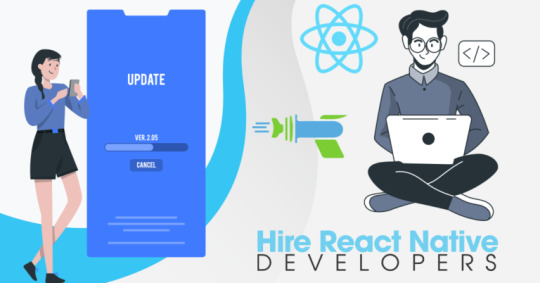
10. Dynamic App Update
React Native App Development Services has a great module that helps you to fix the bug. For this, you can use Microsoft code push for dynamic updates.
11. Analytics
Analytics is an important way to know and monitor the behavior of your customers. For the basic use case module, you can use Firebase Google analytics. If you need support and have specific use cases like analyzing ads and their reach or you are seeking analysis in terms of marketing channels, also use Clever tap, Appsflyer.
Final Words:
Eventually, I hope the above all topics will be helpful to you. Today every business has used react-native to their native app development, as the platform provides you many benefits that save your time and cost as well. Hire Dedicated React Native App Developers from Shiv Technolabs. It is one of the Best React Native App Development companies with well-experienced developers.
1 note
·
View note
Photo

Building an e-mail authentication with React Native, Expo and Firebase ☞ https://bit.ly/2RXyXY9 #ReactNative #Firebase #Morioh
0 notes
Photo

Building an e-mail authentication with React Native, Expo and Firebase ☞ https://bit.ly/2RXyXY9 #ReactNative #Firebase #Morioh
0 notes
Photo

Building an e-mail authentication with React Native, Expo and Firebase ☞ https://bit.ly/2RXyXY9 #ReactNative #Firebase #Morioh
0 notes
Photo

Building an e-mail authentication with React Native, Expo and Firebase ☞ https://bit.ly/2RXyXY9 #ReactNative #Firebase #Morioh
0 notes
Text
Arivaa Firebase (React Native and Expo) (Native Web)
Arivaa firebase aims at integrating Arivaa Basic with firebase which making perfect mix of Firebase,Expo and antd design for kickstarting your business project.
Highlights
1.Multiprovider Authentication using firebase
2. Realtime Data updates using firebase
3. Social Authentication with Facebook,Google,Twitter and Github
4. Recaptcha Support
5. OTP Integration
6. Localization Support
7. Phone number verification
Other Features
1. UI Screens along with functional flow
2. Splash Screen
3. Introduction Screens
4. Login
5. Signup
6. Forgot Password
7. Verify Otp
8. Reset Password
9. Profile Screens (Both view and edit)
10. Home Screen
11. Drawer Integration
12. Change Password
13. Supported Features and Architectures
14. Local Authentication
15. Social Authentication with Facebook and Google
16. Extensible Form Validation Architectures with various types of inputs
17. Extensible Configuration based Redux Integration
18. Easy to use Spinner anywhere across the application
19. Multiple ways of showing system messages
20. Scalable and extensible Routing architecture containing security aspects
21. Configuration based drawer
22. Localization Support
23. Multiple types of headers according to the application needs
24. Expo Supported
25. Antd Design
26. All the features are fully functional with mock backend, So that the user can integrate with actual backend with minimal configuration.
27. Localization
28. An extensive library of custom components based on factual needs
29. Multiprovider Authentication using firebase
30. Realtime Data updates using firebase
31. Social Authentication with Facebook,Google,Twitter and Github
32. Recaptcha Support
33. OTP Integration
from CodeCanyon new items https://ift.tt/2GYgBC5 via IFTTT https://goo.gl/zxKHwc
0 notes
Link
Master the advanced topics of React Native: Animations, Maps, Notifications, Navigation and More!
What you’ll learn
Make compelling applications using expert-level features of React Native
Create amazingly smooth and performant animations
Build new React Native apps with Expo
Understand the latest Navigation options for new React Native apps
Add logic to your Firebase backend with Google Cloud Functions
Update your users with cross platform Push Notifications
Handle your users going offline with Redux Persist
Requirements
Basic understanding of React Native
Description
Note: This course assumes you’ve got the basics of React Native down. Check out my course ‘The Complete React Native and Redux’ course, its the perfect preparation!
Go beyond the basics of React Native! This course will teach you the advanced topics you need to make a #1 best-selling app.
Push Notifications? You will learn it. In Depth Animations? Included. Offline Data Persistence? Of course!
——————————
What Will You Build?
All of my courses are ‘learn-by-doing’: no boring endless lectures with Powerpoints, only live, interactive coding examples. In this course we’ll build three separate apps with increasing complexity, each of which will profile different features of React Native. By putting each concept into a real app, you’ll get a better idea of when to use each unique and powerful feature.
1) Build a Tinder-like Swipe Deck. Yes, the classic animated component! We’ll make a big stack of beautiful cards that a user can slide around the screen, swiping right to ‘like’ an item, or ‘left’ to dislike an item. This warmup will get you familiar with interpreting touch input through the PanResponder system, moving elements around with the Animated module, and turning extrapolating animation values through the Interpolation system.
2) Dive into the backend with One Time Password authentication. Ever been prompted to sign in using a code that gets texted to you? One Time Passwords are a new authentication flow that leverages a user’s phone number as their unique identifying token. We will use the Twilio API to send a text message to a user to verify their identity, while securing our business logic into Firebase’s new Google Cloud Functions.
3) Your own Job-Search app. Tinder for jobs! This app is is 100% feature complete! We’ll build an app with a full welcome-screen tutorial for our new user’s, Facebook authentication, and map components. The user will be presented with a list of jobs to like or dislike based on their location by leveraging Indeed’s Job API, then follow up and apply to their choice jobs.
Both OSX and Windows supported – develop iOS or Android!
——————————
Here’s what we’ll learn:
Learn the theory and practice of implementing complex Animation systems
Bootstrap your app using the new Expo platform
Navigate your user around using React-Navigation
Engage your users with automated Push Notifications
Enhance authentication flows in your app with One Time Passwords with Twilio
Increase your app’s reliability with Offline Data Persistence
Educate your users on how to use your app with Welcome Tutorial pages
Authenticate your users using Facebook OAuth
Go beyond the mobile front end with Google Cloud Functions: Add custom logic to your Firebase backend
Locate your users with cross-platform MapView components
I’ve built the course that I would have wanted to take when I was learning React Native. A course that explains the concepts and how they’re implemented in the best order for you to learn and deeply understand them.
Who this course is for:
This course is for anyone looking to learn advanced topics of React Native
Created by Stephen Grider Last updated 4/2018 English English [Auto-generated]
Size: 2.24 GB
Download Now
https://ift.tt/2oSKtGb.
The post React Native: Advanced Concepts appeared first on Free Course Lab.
0 notes
Text
Arivaa Firebase (React Native and Expo) (Native Web)
Arivaa firebase aims at integrating Arivaa Basic with firebase which making perfect mix of Firebase,Expo and antd design for kickstarting your business project. Highlights 1.Multiprovider Authentication using firebase 2. Realtime Data updates using firebase 3. Social Authentication with... download link => Arivaa Firebase (React Native and Expo) (Native Web)
0 notes